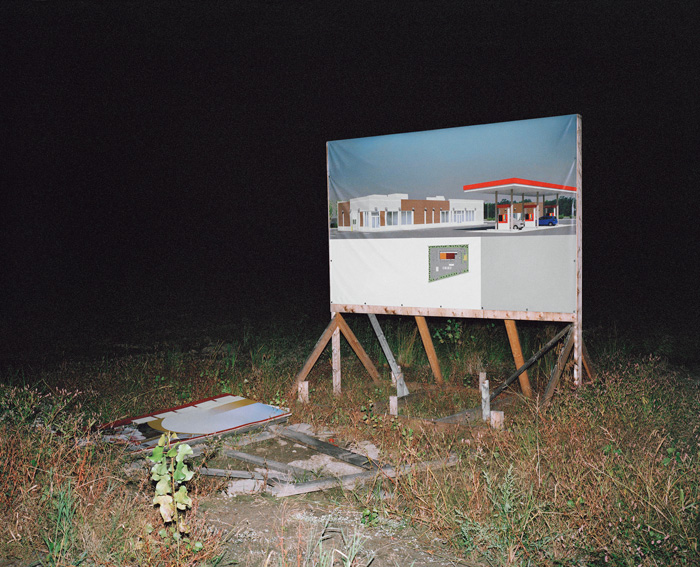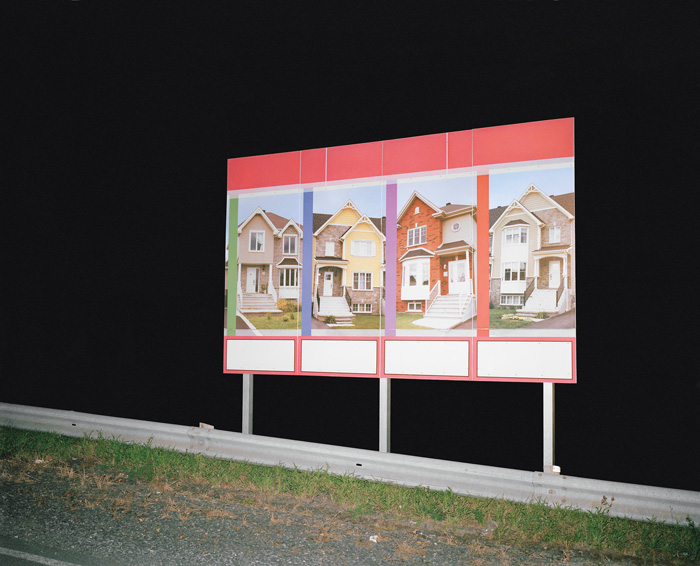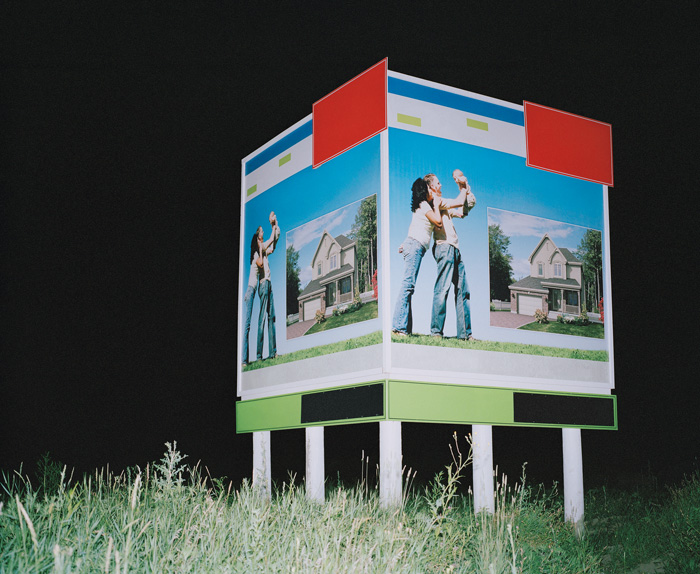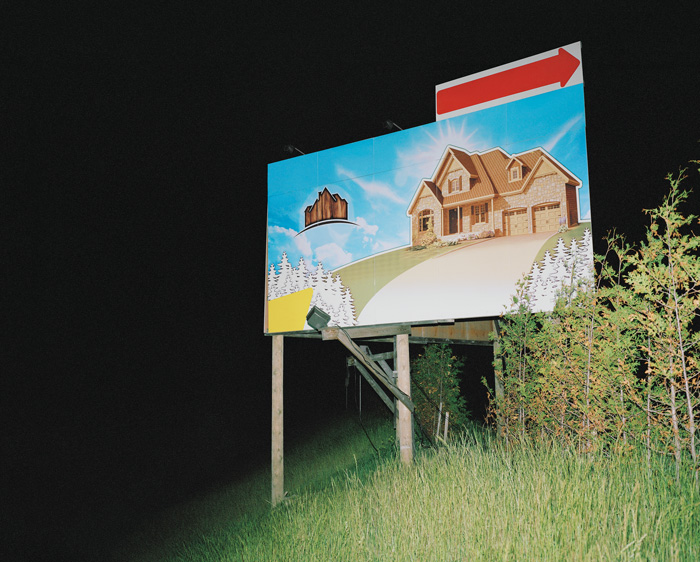One can easily imagine the scene, so banal that it is universal. On a moonless night, its highbeams blazing, a new car, with a new couple inside, rolls down a remote road, far from the bustle of the city. The passengers, the nuclear family of the post-atomic era, already see themselves there, deluded by the illusion of an extraordinary suburb – one of a thousand similar suburbs. In a flash, a billboard trumpeting future residential developments springs up from the tall grass and the bulrushes, inhabits the imagination for an instant, then vanishes. Steve Veilleux’s work situates us at this moment, the moment when a real estate developer’s prefabricated and prophetic image has not yet been brought to life. This series begun in 2012, shows us some of these billboards, photographed at night with a flash. However, the written information on the billboards has been erased, leaving only what might be called the “graphical rhetoric,” a matrix formed of computer-generated 3D models and snapshots of families – with fake, anonymous smiles – harvested from online image banks.
Veilleux recently added to this series a four-minute video called Contrecœur. The video is a 3D synthetic animation in which the artist uses the same principle: only the visuals, the graphics of the inserts, and the original music have been preserved. Travelling and zoom shots follow each other at a jerky, rapid pace, leaving an impression of intense vacuity and uneasiness. Because we have become familiar with this style of montage through the codes of broadcast television, at certain moments in the work we might almost think we are watching a news bulletin announcing a catastrophe in an unknown neighbourhood. This effect inevitably evokes Barthes’s semiological writings on the rhetoric of the image – that is, how the meaning of a photograph is constructed and modified depends on the legend or text that is affixed to it.
In any case, the fascinating, terrifying vertigo that we feel when we look at these works reminds us of their unsettling resemblance to the propagandistic and utopian advertising of the 1950s, at the height of the baby boom (but also of the cold war). The gaudy compositions of contemporary advertising also try – in vain? – to convince us of this simulacrum of prefabricated happiness.
Lodged like a tooth in the flesh of our most tender aspirations is the implacable resurgence of the sales pitch: regular, constant, and with an enduring, unchanging image. It remains to be seen, with a distance of a few generations and as the spectre of global collapse of ecosystems hangs over us, how the merchants of dreams will manage to sell us, one last time – even though they no longer believe it themselves – the enchantment of the domestic prison at the heart of an achievable dystopia.
Translated by Käthe Roth
Steve Veilleux was born in 1985 in Contrecœur, in the Montérégie region, where he still lives. Working mainly in photography, he looks at the transformation of the landscape in the region where he was born and also questions the ambiguous nature of the photograph. In 2012, he received a young artist grant from the Conseil des arts et des lettres du Québec, and in 2013 he received an award at the Magenta Foundation’s Flash Forward Festival. His work has been shown mainly in Quebec. www.steveveilleux.com
Sébastien Hudon is the artistic director of La Bande Vidéo, as well as a writer and independent curator. He has worked in various museums, including the Musée national des beaux-arts du Québec and the Montreal Museum of Fine Arts, in positions related to the acquisition and documentation of photographic artworks. As a curator, he has presented two exhibitions at Maison Hamel-Bruneau, in Quebec City: Concerto en bleu majeur and Photographes rebelles à l’époque de la Grande Noirceur (1937-1961).











